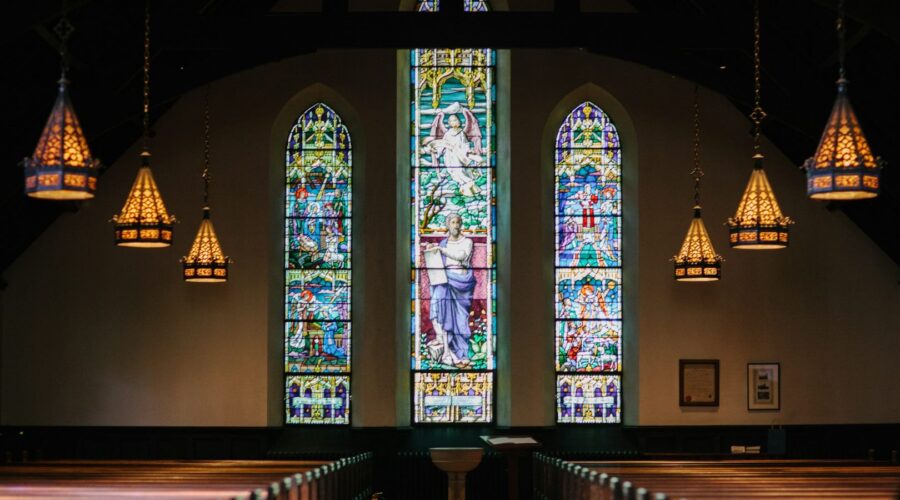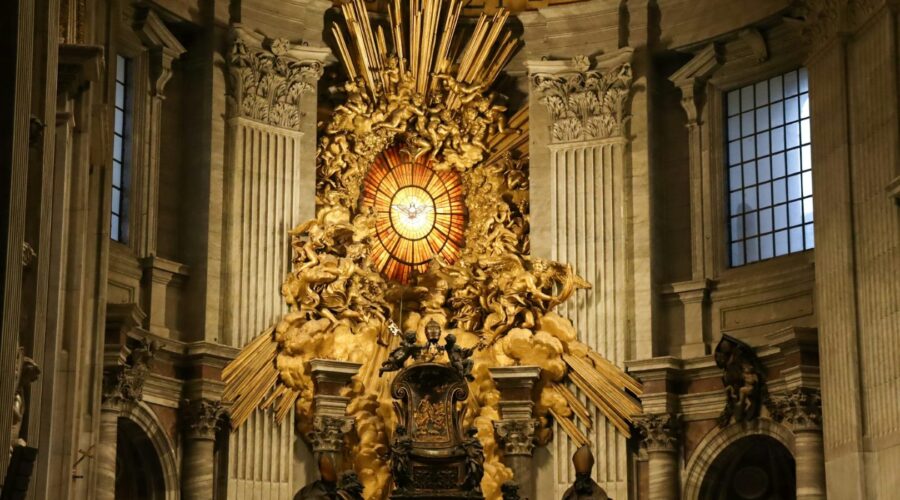Your cart is currently empty!
Blog

Journey Church: A Comprehensive Guide to Understanding and Experiencing Its Impact
Introduction
Journey Church is a global church with a vision to see people meet, know, follow, and become like Jesus Christ. Founded in 1992 by Pastors Craig Groeschel and Chris Hodges, Journey Church has grown to over 150 campuses worldwide, with millions of people gathered each week.
Core Values
Journey Church is guided by four core values:
- Love God with all your heart, soul, and mind.
- Love people with unconditional acceptance and compassion.
- Make disciples by helping people grow in their faith and become like Jesus.
- Serve the world through practical acts of kindness and justice.
Ministries and Programs
Journey Church offers a wide range of ministries and programs to meet the needs of people at all stages of life. These include:
Small Groups
Journey Church emphasizes the importance of small groups as a way for people to connect with others, grow in their faith, and serve their communities.
Discipleship Programs
Journey Church provides various discipleship programs designed to equip and empower believers to live a life that follows Jesus Christ.
Children’s Ministry
Journey Church offers age-appropriate programs for children from birth through high school, helping them discover God’s love and learn how to follow Jesus.
Worship Services
Journey Church’s worship services are known for their high-energy music, dynamic teaching, and engaging atmosphere. Services are designed to connect people with God and inspire them to live out their faith.
Impact and Outreach
Journey Church is committed to making a positive impact on the local and global community. This includes:
Community Outreach
Journey Church partners with various organizations to provide practical assistance, such as food distribution, clothing drives, and disaster relief.
Missions
Journey Church supports global missions projects, sending teams of volunteers to serve in communities around the world.
Becoming a Member
Becoming a member of Journey Church involves attending a discovery class, completing a membership application, and being baptized.
Campuses and Locations
Journey Church has over 150 campuses in the United States and around the world. You can find a campus near you by visiting their website at https://journeychurch.com.
Conclusion
Journey Church is a vibrant and growing church that is passionate about helping people meet, know, follow, and become like Jesus Christ. Through its core values, ministries, and programs, Journey Church empowers believers to live a life of purpose, connection, and service.

Understand the USCCB Readings: A Comprehensive Guide for Catholics
Introduction
The United States Conference of Catholic Bishops (USCCB) is responsible for the liturgical texts used in Catholic worship in the United States. These texts include the readings for Mass, which are selected from the Bible and provide a foundation for the homily and the liturgy.
Understanding the USCCB readings is essential for Catholics who want to fully participate in the Mass and deepen their faith. This comprehensive guide will provide an overview of the USCCB readings, their history, and how to use them for spiritual growth.
History of the USCCB Readings
Pre-Vatican II
Before the Second Vatican Council (1962-1965), the readings for Mass were fixed and did not vary throughout the year. The only exceptions were for special feasts and solemnities.
Post-Vatican II
The Second Vatican Council introduced significant changes to the liturgy, including the introduction of a three-year cycle of readings. This cycle ensured that a wider range of Scripture was proclaimed at Mass, allowing Catholics to experience the fullness of God’s Word.
The Three-Year Lectionary Cycle
The USCCB readings follow a three-year cycle, known as the A, B, and C cycles. Each cycle focuses on a different aspect of the biblical narrative:
- Cycle A: Emphasizes the Gospel of Matthew
- Cycle B: Emphasizes the Gospel of Mark
- Cycle C: Emphasizes the Gospel of Luke
The Gospel reading for each Sunday is usually accompanied by readings from the Old Testament, the New Testament epistles, and the Psalms.
How to Use the USCCB Readings
To get the most out of the USCCB readings, consider the following tips:
Before Mass
- Read the readings for the day from a Bible or online resource.
- Reflect on the readings and make note of any questions or insights.
- Consider the connection between the readings and the theme of the liturgy.
During Mass
- Listen attentively to the readings and homily.
- Connect the readings to your own life and experience.
- Engage in the response prayers and acclamations.
After Mass
- Spend time in personal reflection on the readings.
- Discuss the readings with a friend or family member.
- Consider how the readings can guide your actions and decisions in the coming week.
Resources for Studying the USCCB Readings
Numerous resources are available to help Catholics study the USCCB readings:
- USCCB Scripture Website: https://bible.usccb.org/
- Ignatius Catholic Study Bible: A highly respected study Bible with extensive notes and commentaries from Catholic scholars.
- The Navarre Bible: A multi-volume commentary on the Bible that provides a wealth of historical, linguistic, and spiritual insights.
Conclusion
The USCCB readings are an essential part of Catholic worship. By understanding their history, structure, and significance, Catholics can deepen their knowledge of Scripture and enrich their liturgical experience. By reflecting on the readings before, during, and after Mass, Catholics can grow in their faith and draw closer to God.

Unlock the New Life Church: A Comprehensive Guide to Faith, Community, and Purpose
Introduction
In a world filled with uncertainty and turmoil, the New Life Church offers a beacon of hope, a sanctuary for those seeking spiritual growth, community, and purpose. This comprehensive guide will delve into the essence of the New Life Church, its mission, values, and the transformative impact it has on individuals and communities alike.
Mission and Values
Mission Statement
The New Life Church’s mission is to glorify God and impact the world by empowering people to live out their God-given potential.
Core Values
- Love: Extending compassion, kindness, and acceptance to all.
- Excellence: Striving for the highest standards in all endeavors.
- Growth: Fostering spiritual, emotional, and intellectual development.
- Community: Building strong relationships and fostering a sense of belonging.
- Mission: Embracing the call to serve and make a difference in the world.
What to Expect at New Life Church
Worship Services
New Life Church offers vibrant and engaging worship services that blend contemporary music, dynamic preaching, and interactive elements. Services create an atmosphere of joy, inspiration, and connection with God and others.
Small Groups
Small groups are the heartbeat of New Life Church. They provide a safe and supportive environment for members to connect, discuss Scripture, grow in their faith, and build meaningful relationships.
Service and Outreach
The New Life Church is committed to serving the local community and beyond. Through various outreach programs, members actively engage in serving the needy, supporting local organizations, and spreading the love of Christ.
How to Get Involved
Becoming a Member
Membership at New Life Church is open to all who have made a personal commitment to follow Jesus Christ. Members enjoy full participation in the church’s activities and receive support from a dedicated pastoral team.
Volunteering
Volunteering is an excellent way to get involved in the New Life Church community. Opportunities are available in various ministries, such as worship, small groups, outreach, and administration.
Transformative Impact
Spiritual Growth
New Life Church provides a nurturing environment for individuals to grow in their relationship with God. Through worship services, small groups, and discipleship programs, members deepen their understanding of Scripture, develop a closer walk with Christ, and experience a transformed life.
Community and Belonging
The New Life Church fosters a strong sense of community where individuals feel welcomed, accepted, and loved. Small groups, outreach events, and social gatherings create opportunities for members to connect, build friendships, and support one another through life’s challenges.
Purpose and Destiny
New Life Church empowers individuals to discover their God-given purpose and live out their destiny. Through spiritual guidance, mentorship, and practical training, members are equipped to use their gifts and talents to make a positive impact in the world.
Leadership and Pastoral Team
New Life Church is led by a dedicated pastoral team that is committed to providing spiritual guidance, pastoral care, and administrative oversight. The pastor and elders oversee the church’s operations, cast vision, and ensure the alignment of all ministries with the core mission and values of the church.
Conclusion
The New Life Church is a vibrant and growing community of believers who are committed to living out their faith, impacting the world, and making a lasting difference in the lives of individuals and families. Whether you are seeking spiritual growth, community, or a sense of purpose, the New Life Church offers a welcoming and transformative environment where you can experience the fullness of God’s love and grace.
For more information about the New Life Church, visit their website at www.newlifechurch.org or connect with them on social media.

Discover the Baptist Church Nearest to You: A Comprehensive Guide
Finding a Baptist Church Near You
Baptist churches are known for their emphasis on the Bible, personal faith, and congregational autonomy. With a global presence, Baptist churches offer a welcoming and diverse community for believers of all ages and backgrounds. If you’re searching for a Baptist church near you, this comprehensive guide will provide you with all the information you need.
Search Directories and Maps
* **Baptist Bible Fellowship International (BBFI)**: https://www.bbfi.org/church-search
* **Southern Baptist Convention (SBC)**: https://www.sbc.net/church-finder/
* **National Baptist Convention, USA, Inc. (NBC)**: https://www.nationalbaptist.org/find-a-church/
* **Google Maps**: Search for “Baptist Church near me” to find churches in your area.Attend Community Events
* **Local Festivals and Markets**: Baptist churches often participate in community events, such as festivals, markets, and parades. Look out for their booths or displays.
* **Neighborhood Gatherings**: Attend neighborhood gatherings, such as block parties or community meetings, where you may encounter members of local Baptist churches.Ask Friends and Family
* **Word-of-Mouth**: Ask friends, family, or coworkers if they attend a Baptist church or know of one nearby.
* **Social Media**: Join local Facebook groups or ask on social media platforms for recommendations.Choosing the Right Baptist Church
Once you have a list of potential churches, it’s important to visit and evaluate each one to find the best fit for you.
Consider the following factors:
* Doctrine: Ensure that the church’s teachings align with your beliefs.
* Worship Style: Determine if the church’s worship style, such as traditional, contemporary, or blended, resonates with your preferences.
* Community: Is the church welcoming, inclusive, and actively involved in outreach?
* Programs: Do they offer programs or ministries that cater to your interests, such as Sunday School, youth groups, or Bible studies?
* Location and Accessibility: Consider the church’s location and whether it is accessible for you.Baptist Church Beliefs and Practices
* Salvation through Faith**: Baptists believe that salvation is a gift from God and is received by faith alone in Jesus Christ.
* Authority of the Bible: The Bible is the sole authority for faith and practice.
* Local Church Autonomy: Each Baptist church is self-governing and independent.
* Believers’ Baptism**: Baptism is practiced as a believer’s response to salvation.
* Lord’s Supper**:** Regularly observed as a remembrance of Christ’s sacrifice.Types of Baptist Churches
There are various types of Baptist churches, each with its unique characteristics and emphases.
* Conservative Baptist Churches: Emphasize biblical teachings, traditional worship, and conservative social values.
* Moderate Baptist Churches: Balance biblical truth with social justice, outreach, and contemporary worship styles.
* Progressive Baptist Churches: Embrace a more liberal approach to theology, social issues, and worship.
* African American Baptist Churches: Rooted in African American heritage and often emphasize social justice and spiritual renewal.Benefits of Attending a Baptist Church
* Spiritual Growth: Bible-centered worship and teachings foster spiritual growth.
* Community: Provides a supportive and welcoming community for believers.
* Ministries: Offers various ministries to meet the needs of members and the community.
* Outreach: Engages in local and global missions to share the Gospel.
* Worship and Fellowship: Experiences of collective worship, fellowship, and prayer.Conclusion
Finding the right Baptist church near you can be a rewarding journey. By following the tips and resources provided in this guide, you can discover a church where you can connect with fellow believers, grow in your faith, and contribute to your community. Remember to approach your search with an open heart and a desire for spiritual connection.

The United Methodist Church: A Comprehensive Guide
Introduction
The United Methodist Church (UMC) is the second-largest Protestant denomination in the United States, with over 12 million members worldwide. It is a global church with a diverse membership, and its mission is to make disciples of Jesus Christ for the transformation of the world.
The UMC is a connectional church, meaning that it is a network of local churches that are all connected to each other through shared beliefs, values, and practices. The church is governed by a General Conference, which meets every four years to set policy and direction for the denomination.
The UMC is a diverse church with a wide range of beliefs and practices. However, all United Methodists share a common core of beliefs, including:
- The Bible is the inspired Word of God.
- Jesus Christ is the Son of God and the Savior of the world.
- The Holy Spirit is the power of God that empowers us to live as Christians.
History
The UMC was formed in 1968 by the merger of the Methodist Church and the Evangelical United Brethren Church. The Methodist Church was founded in 1784 by John Wesley, and the Evangelical United Brethren Church was founded in 1815 by Philip William Otterbein.
The merger of these two denominations was a major event in the history of American Christianity. It created a new denomination that was more diverse and more global than either of its predecessors.
Doctrine
The UMC’s doctrine is based on the Bible and the Wesleyan tradition. The Wesleyan tradition is a set of beliefs and practices that were developed by John Wesley, the founder of Methodism. The Wesleyan tradition emphasizes:
- The importance of personal experience in religion.
- The role of grace in salvation.
- The importance of Christian living.
The UMC’s doctrine is expressed in the church’s Articles of Religion, which are a set of 25 statements that summarize the church’s beliefs.
Structure
The UMC is a connectional church, which means that it is a network of local churches that are all connected to each other through shared beliefs, values, and practices. The church is governed by a General Conference, which meets every four years to set policy and direction for the denomination.
The General Conference is composed of delegates from each of the UMC’s annual conferences. Annual conferences are regional bodies that oversee the work of the church in a particular geographic area.
Local churches are the basic unit of the UMC. They are led by pastors who are appointed by the bishop of the annual conference. Local churches are responsible for carrying out the mission of the church in their communities.
Social Justice
The UMC has a long history of social justice activism. The church has been involved in a wide range of social justice issues, including civil rights, economic justice, and environmental protection.
The UMC’s social justice work is based on the belief that all people are created in the image of God and that all people deserve to be treated with dignity and respect.
Mission and Outreach
The UMC’s mission is to make disciples of Jesus Christ for the transformation of the world. The church’s outreach efforts are focused on reaching out to people who are not yet connected to a church and helping them to become followers of Jesus Christ.
The UMC’s outreach efforts include a variety of programs and ministries, such as:
- Sunday school
- Small groups
- Mission trips
- Community outreach programs
Conclusion
The United Methodist Church is a diverse and global church with a rich history and a commitment to social justice. The church’s mission is to make disciples of Jesus Christ for the transformation of the world.
If you are looking for a church that is committed to making a difference in the world, the United Methodist Church is a great option.
Additional Resources

Unveiling Breeze Church Management: A Comprehensive Guide for Streamlined Ministry
Introduction
In today’s digital age, churches face the challenge of managing their operations efficiently while maintaining a focus on their spiritual mission. Breeze Church Management Software emerges as a powerful tool that empowers churches to streamline their administrative tasks, enhance communication, and nurture their congregations. This comprehensive guide will delve into the key features and benefits of Breeze, providing practical insights to help churches unlock its full potential.
Key Features of Breeze Church Management
1. Centralized Member Management
Breeze centralizes member data, enabling churches to easily track attendance, contact information, and giving history. This streamlined approach improves communication efforts, fosters connection among members, and supports personalized ministry outreach.
2. Robust Communication Tools
Effective communication is crucial for building strong church communities. Breeze offers a suite of communication tools, including email, SMS, and social media integration. Churches can create targeted email campaigns, send personalized birthday greetings, and foster online engagement through seamless integration with social media platforms.
3. Online Giving and Financial Management
Breeze streamlines the giving process for members, allowing them to make secure donations online or via mobile devices. Integrated financial management capabilities provide churches with real-time insights into their financial standing, account balances, and giving trends. This transparency enhances financial stewardship and enables informed decision-making.
4. Event and Volunteer Management
Breeze makes it effortless to organize and manage church events. Create online registration forms, send event notifications, and track attendance. The volunteer management module simplifies the recruitment, scheduling, and communication with volunteers, ensuring seamless coordination of church events.
5. Group and Small Group Management
Breeze fosters community engagement by facilitating the creation and management of various groups and small groups. Churches can categorize members into specific groups based on their interests, age, or spiritual journey. This allows for targeted communication, specialized content, and personalized outreach to meet the diverse needs of their congregation.
Benefits of Using Breeze Church Management
1. Increased Efficiency and Time Savings
By automating administrative tasks, Breeze frees up church staff to focus on their pastoral responsibilities. The centralized data and streamlined communication channels reduce the time spent on manual data entry, scheduling, and member follow-up.
2. Enhanced Member Engagement
Breeze provides churches with the tools to build stronger relationships with their members. Personalized communication, targeted group messaging, and online giving foster a sense of community and encourage active participation.
3. Data-Driven Decision Making
The financial management and reporting capabilities of Breeze empower churches to make data-driven decisions. Real-time financial insights, giving trends, and attendance reports provide guidance for strategic planning and resource allocation.
4. Improved Collaboration and Communication
Breeze facilitates seamless communication and collaboration among church staff and volunteers. Shared calendars, group discussions, and task management features promote coordination and ensure that everyone is on the same page.
Tips for Implementing Breeze Church Management
1. Plan and Prepare
Before implementing Breeze, take the time to carefully plan and prepare. Identify the specific needs of your church and determine how Breeze can best support your ministry. Engage with your staff and congregation to gather feedback and ensure smooth adoption.
2. Train Your Team
Comprehensive training is essential for successful Breeze implementation. Provide thorough training for all staff and volunteers who will be using the software. This will empower them to fully utilize its features and maximize its benefits.
3. Customize and Integrate
Breeze offers customizable features that allow churches to tailor the software to their unique requirements. Integrate Breeze with other church software or tools to enhance its functionality and streamline your operations.
4. Seek Support and Resources
Breeze provides excellent customer support and resources to assist churches with their implementation and ongoing use. Utilize the available documentation, online forums, and technical support to ensure a seamless experience.
Conclusion
Breeze Church Management Software is an invaluable tool that empowers churches to optimize their operations, enhance communication, and nurture their congregations. By leveraging its key features and benefits, churches can streamline administrative tasks, foster member engagement, and make data-driven decisions that strengthen their ministry. With the right implementation and support, Breeze becomes an indispensable partner in the pursuit of a thriving and vibrant church community.

Mormon Missionaries: A Comprehensive Guide
Introduction
Mormon missionaries are young men and women who serve full-time for The Church of Jesus Christ of Latter-day Saints (LDS Church). They are sent out in pairs to share their beliefs and invite people to learn more about the LDS Church. Mormon missionaries are known for their distinctive black name tags, white shirts, and black ties (for men) or skirts and blouses (for women). They are a familiar sight in communities around the world.
Missionary Service
Missionary service is an important part of the LDS Church. Young men are expected to serve a two-year mission, while young women can serve for 18 months. Missionaries are typically between the ages of 18 and 25. They are sent to serve in one of the LDS Church’s 400+ missions around the world.
During their mission, missionaries focus on teaching the gospel of Jesus Christ. They also provide humanitarian service and community outreach. Missionaries typically live in pairs and are assigned to a specific geographic area. They visit homes, meet with people in public places, and participate in local events.
Rules and Expectations
Missionaries are expected to follow strict rules and guidelines. They are required to be clean-cut, well-groomed, and modest in their appearance. They are also expected to be obedient, respectful, and honest. Missionaries are not allowed to date or engage in any other activities that could distract them from their work.
Missionaries are also expected to learn the local language and culture. They are taught to be sensitive to the beliefs and practices of others. Missionaries are encouraged to build relationships with people from all walks of life.
Benefits of Missionary Service
There are many benefits to serving a Mormon mission. Missionaries develop their faith, learn valuable life skills, and make lifelong friends. They also have the opportunity to serve others and make a difference in the world.
Personal Growth
Missionary service is a time of great personal growth. Missionaries learn to be more independent, responsible, and self-reliant. They also develop their leadership skills and their ability to communicate effectively. Missionaries learn to work hard and to persevere through challenges.
Spiritual Development
Missionary service is also a time of great spiritual development. Missionaries learn more about the gospel of Jesus Christ and their relationship with God. They also have the opportunity to share their beliefs with others and to help them come closer to Christ.
Service to Others
Missionaries are also called to serve others. They provide humanitarian service and community outreach in their assigned areas. Missionaries often work with local organizations to help the poor, the sick, and the needy. They also participate in community events and service projects.
How to Become a Mormon Missionary
If you are interested in serving a Mormon mission, there are a few steps you need to take.
- Be a member of the LDS Church. You must be a baptized member of the LDS Church in good standing to serve a mission.
- Meet the age requirements. Young men must be between the ages of 18 and 25 to serve a mission. Young women can serve between the ages of 19 and 25.
- Be worthy. You must be worthy to serve a mission. This means that you must be following the commandments of God and living a Christ-like life.
- Submit an application. Once you have met the requirements, you can submit an application to serve a mission. The application process includes an interview with your bishop and stake president.
- Receive a mission call. If you are approved to serve a mission, you will receive a mission call from the LDS Church. Your mission call will include the name of the mission you will be serving in and the date you will be leaving.
Conclusion
Mormon missionaries are a vital part of the LDS Church. They share their beliefs, provide humanitarian service, and make a difference in the world. If you are interested in serving a Mormon mission, I encourage you to learn more and to apply. It is a life-changing experience that will bless you in many ways.

Prayer Requests: A Guide to Effective Supplication
Understanding Prayer Requests
Prayer requests are expressions of our needs and desires to God. They serve as a means of communication between us and our Heavenly Father, allowing us to seek guidance, support, and assistance in various aspects of our lives.
- Purpose of Prayer Requests
Prayer requests enable us to:- Connect with God and deepen our relationship.
- Express our gratitude and acknowledge God’s presence in our lives.
- Seek guidance and wisdom in times of decision-making.
- Intercede on behalf of others in need.
- Experience God’s love, peace, and provision.
Crafting Effective Prayer Requests
Effective prayer requests are characterized by:
- Specificity
Clearly articulate your needs and desires to God. Avoid vague or general requests.
- Focus
Concentrate on one specific request at a time. Avoid overwhelming God with multiple unrelated requests.
- Sincerity
Offer your requests with genuine humility and earnestness. God values honesty and vulnerability.
- Faith
Trust that God is capable and willing to meet your needs. Pray with a heart filled with faith.
- Persistence
Do not give up on praying. God often answers prayers in His own time and way.
Types of Prayer Requests
Prayer requests can encompass a wide range of topics, including:
- Personal Needs
Physical healing
Emotional support
Spiritual growth
- Relationships
Marriage and family
Friendships
Restoration and reconciliation
- Financial Matters
Provision and debt relief
Job security and career guidance
Financial stability
- Other Requests
World peace
Justice and compassion
Environmental stewardship
Tips for Submitting Prayer Requests
Keep your requests brief and concise.
Pray regularly and consistently.
Use specific language to describe your needs.
Be open to receiving God’s guidance and direction.
Share your prayer requests with trusted friends or family members.
Join prayer groups or online prayer communities.
Remember that unanswered prayers may be opportunities for growth and trust.
Examples of Prayer Requests
| **Topic** | **Example** |
|—|—|
| Physical Healing | “Lord, I pray for healing for my broken leg. May Your hand guide the doctors and nurses in their care.” |
| Emotional Support | “Heavenly Father, I ask for strength and comfort as I navigate this difficult time. Fill me with Your love and peace.” |
| Financial Provision | “Dear God, I seek Your provision for my urgent financial needs. Help me find a way to meet my obligations.” |
| Marriage Restoration | “Lord, I lift up my marriage to You. Heal the wounds between us and restore our love and connection.” |
| World Peace | “Almighty God, I pray for peace in the world. Let Your love and compassion prevail over conflict and division.” |Conclusion
Prayer requests are an integral part of our faith journey. By crafting effective requests, we deepen our connection with God, express our dependence on Him, and seek His guidance and provision. Remember, God is always listening and eager to meet our needs in accordance with His perfect plan.
- Purpose of Prayer Requests

Unlocking the Secrets of the Apostles’ Creed: A Comprehensive Guide
Introduction
The Apostles’ Creed is one of the most widely used Christian creeds, summarizing core tenets of the faith. Its origins can be traced back to the early Church and it has played a significant role in shaping Christian doctrine and identity. This comprehensive guide will explore the history, content, and significance of the Apostles’ Creed, providing a deeper understanding of this foundational statement of belief.
Historical Origins
The origins of the Apostles’ Creed are shrouded in mystery, but scholars believe it developed gradually over time. Early versions of the creed appear in the writings of Irenaeus and Tertullian in the late 2nd and early 3rd centuries. It is believed that the creed was used in baptismal ceremonies and as a catechism for new converts.
Theological Influences
The Apostles’ Creed drew upon various theological sources, including:
- The Old Testament: The creed affirms the belief in the God of Israel and His creative power.
- The New Testament: It includes elements from the teachings of Jesus Christ, particularly His birth, death, and resurrection.
- Early Christian traditions: The creed reflects beliefs and practices that were common in the early Church.
Content and Structure
The Apostles’ Creed consists of twelve articles of belief, divided into three sections:
Section Articles God the Father - I believe in God, the Father almighty, creator of heaven and earth.
- And in Jesus Christ, his only Son, our Lord.
Jesus Christ - He was conceived by the Holy Spirit, born of the Virgin Mary.
- He suffered under Pontius Pilate, was crucified, died, and was buried.
- He descended into hell. The third day He rose again from the dead.
- He ascended into heaven and is seated at the right hand of God the Father almighty.
- From there He will come to judge the living and the dead.
Holy Spirit and the Church - I believe in the Holy Spirit.
- I believe in the holy catholic Church. The communion of saints.
- The forgiveness of sins.
- The resurrection of the body.
- And the life everlasting. Amen.
Significance and Use
The Apostles’ Creed has played a central role in Christian worship, theology, and catechesis:
Worship
The Apostles’ Creed is frequently recited in Christian liturgies, such as the Mass, as a statement of faith and a profession of belief.
Theology
The creed provides a concise summary of Christian doctrines, including:
- The Trinity: It affirms belief in God the Father, Jesus Christ the Son, and the Holy Spirit.
- Incarnation: It declares that Jesus Christ was fully human and fully divine.
- Resurrection: It confesses that Jesus Christ rose from the dead and ascended into heaven.
Catechesis
The Apostles’ Creed is often used to teach the basics of the Christian faith to children and new believers. Its simple language and straightforward structure make it easy to understand and memorize.
Modern Interpretations
While the Apostles’ Creed remains a widely accepted statement of faith, various interpretations and perspectives have emerged over the centuries:
Ecumenical
The Apostles’ Creed forms the basis for ecumenical agreements among Christian denominations, as it is shared by Catholics, Orthodox, Protestants, and Anglicans.
Inclusive Language
Some modern versions of the Apostles’ Creed use inclusive language, such as “Creator” instead of “Father” or “people of God” instead of “communion of saints.”
Contextualized Interpretations
In recent decades, theologians have sought to interpret the Apostles’ Creed within the context of different cultures, social justice issues, and environmental concerns.
Conclusion
The Apostles’ Creed has stood the test of time as a powerful affirmation of Christian faith. Its enduring relevance lies in its ability to articulate core beliefs, foster unity, and inspire hope. By understanding the historical origins, content, and significance of this creed, Christians can deepen their understanding of their own faith and engage in meaningful dialogue with others.

Church Banners: The Ultimate Guide to Design, Materials, and Display
Church banners are powerful tools for communication and outreach. They can be used to announce events, share messages, and create a welcoming atmosphere. In this comprehensive guide, we will explore everything you need to know about church banners, from design to materials to display.
Design
Choosing a Theme
When designing your church banner, the first step is to choose a theme that aligns with your message. Consider the event or purpose of the banner, as well as the target audience. A clear theme will help you create a cohesive and impactful design.
Typography
The choice of fonts is crucial for readability and visual appeal. Use bold, easy-to-read fonts for the main message, and consider using smaller or decorative fonts for additional information. Remember to ensure that the font size is large enough to be visible from a distance.
Color
Color plays a significant role in conveying emotions and attracting attention. Choose colors that are appropriate for the theme and complement your church’s brand. Bold, contrasting colors can create excitement and urgency, while softer, pastel colors can be more calming and inviting.
Imagery
Images and graphics can enhance the impact of your banner. Use high-quality images that are relevant to your message and visually appealing. Consider using a background image or a custom illustration that aligns with the theme and draws attention to the text.
Materials
Vinyl
Vinyl is a popular material for church banners due to its durability and weather resistance. It is easy to clean and can withstand outdoor conditions, making it ideal for both indoor and outdoor use.
Fabric
Fabric banners offer a more elegant and sophisticated look. They are available in various weights and textures, providing flexibility in terms of style and presentation. Fabric banners are generally less durable than vinyl, but they can be folded and stored more easily.
Mesh
Mesh banners are a lightweight and breathable option, particularly suitable for outdoor use. They allow air to pass through, reducing wind resistance and making them ideal for windy locations.
Display
Placement
The placement of your church banner is crucial for visibility and impact. Choose a location with high foot traffic, such as the front of the church or near a major intersection. Ensure that the banner is positioned at eye level for passersby.
Mounting
There are several mounting options available for church banners. Grommets allow for easy attachment to a pole or rope. Pole pockets can be sewn into the banner for a more secure and professional presentation. Banners can also be hung from a frame or stand.
Lighting
If your banner is displayed in an area with low light, consider adding lighting to enhance visibility. Spotlights or LED lights can illuminate the banner from above or below, making it readable and attention-grabbing.
Tips
* Keep the message concise and easy to read from a distance.
* Use high-resolution images and graphics to ensure clarity and visual impact.
* Consider adding a call to action or contact information to encourage engagement.
* Regularly clean and maintain your banners to preserve their appearance.
* Test the effectiveness of your banner by monitoring the number of people who see it and take action.Conclusion
Church banners are valuable tools for outreach, communication, and branding. By following the guidelines outlined in this guide, you can create and display banners that are effective, eye-catching, and impactful. Remember to consider the design, materials, and display options to ensure that your banner fulfills its intended purpose and represents your church in a positive light.

Discover the Non-Denominational Churches Near You: A Comprehensive Guide
In today’s diverse religious landscape, non-denominational churches have emerged as a popular choice for individuals seeking a faith community. These churches emphasize spiritual growth, personal relevance, and often have a contemporary approach to worship.
Benefits of Attending a Non-Denominational Church
- Freedom and Flexibility: Non-denominational churches typically have less structured rituals and traditions, allowing individuals to engage with their faith in a way that resonates with them.
- Personal Growth: They prioritize personal growth, encouraging members to explore their faith and develop a deeper connection with God.
- Inclusive and Welcoming: These churches welcome individuals from all backgrounds, regardless of their previous religious experiences or beliefs.
- Contemporary Worship: Non-denominational churches often incorporate contemporary music, multimedia presentations, and interactive elements into their worship services.
How to Find Non-Denominational Churches Near You
Online Directories:
- ChurchFinder.com
- ChristianityToday.com Church Finder
- Google Maps (search for “non-denominational churches near me”)
Community Resources:
- Local libraries
- Community centers
- Colleges and universities
What to Look for When Visiting a Non-Denominational Church
- Mission and Values: Read their website or attend a service to understand their beliefs and approach to faith.
- Worship Style: Observe the worship service to see if it aligns with your preferences.
- Community: Pay attention to the atmosphere and interactions between members.
- Opportunities for Growth: Inquire about programs or resources for spiritual development.
- Leadership: Learn about the pastor or other leaders and their vision for the church.
Tips for Choosing the Right Non-Denominational Church
Consider these factors when making a decision:
- Personal Beliefs: Ensure that the church’s teachings resonate with your faith journey.
- Worship Style: Find a church that offers a worship experience that is meaningful and engaging for you.
- Community Fit: Look for a church where you feel welcomed, accepted, and can connect with others.
- Location and Convenience: Consider the church’s accessibility and proximity to your home or work.
Table of Non-Denominational Churches in the US
State City Church Name California Los Angeles The Village Church Texas Houston Lakewood Church Florida Orlando Elevation Church New York New York City Times Square Church Illinois Chicago Willow Creek Community Church Conclusion
Non-denominational churches provide a diverse and vibrant religious experience for individuals seeking spiritual growth, inclusivity, and a personal connection with God. By understanding the benefits, how to find these churches, and what to look for when visiting, you can embark on a meaningful faith journey that aligns with your beliefs and aspirations.

Unveiling the Secrets of Life Church: A Comprehensive Guide
What is Life Church?
Life Church is a global Pentecostal megachurch headquartered in Oklahoma City, Oklahoma. Founded in 1996 by senior pastor Craig Groeschel, it has grown to become one of the largest and most influential churches in the United States. With campuses across the nation and international locations, Life Church offers a range of ministries, outreach programs, and online content.
Core Beliefs
Life Church adheres to a set of core beliefs that shape its teachings and practices:
* The Bible: The authority and sufficiency of Scripture for faith and practice.
* Jesus Christ: The deity of Christ, His incarnation, substitutionary death, resurrection, and lordship.
* Holy Spirit: The existence and empowering presence of the Holy Spirit for spiritual growth.
* Church: The importance of the local church as the body of Christ.
* Mission: To lead people to become fully devoted followers of Christ.Ministries and Outreach
Life Church offers a wide array of ministries and programs:
*
Worship Services:
Weekly services featuring contemporary music, relevant messages, and personal testimonies.
*Small Groups:
LifeGroups provide a community for members to connect, grow spiritually, and serve others.
*Serve and Care:
Outreach initiatives focused on serving the homeless, supporting military families, and providing disaster relief.
*Youth and Children:
Ministries tailored to different age groups, including programs for infants, toddlers, youth, and young adults.
*Missions:
Support for national and international missions, including orphanages, schools, and medical programs.
Online Presence
Life Church has a strong online presence with several popular platforms:
*
Church Online:
Live video streaming of services and access to archived sermons.
*Life.Church:
The official website features podcasts, articles, Bible studies, and other resources.
*YouVersion:
A partnership with YouVersion, a popular Bible app, providing devotional content and access to the Life Church Bible.
Impact and Recognition
Life Church has received significant recognition for its outreach and influence:
* Outreach 100: Recognized as one of the top 100 churches in the United States for outreach by Outreach Magazine.
* Webby Awards: Multiple awards for its website and online content.
* Time 100: Named one of the 100 most influential people in the world in 2005 by Time magazine (Craig Groeschel).
* Forbes 400: Craig Groeschel recognized as one of the richest pastors in the United States by Forbes magazine.Controversy and Criticism
Life Church has not been without controversy:
* Financial Accountability: Questions have been raised regarding the transparency and accountability of Life Church’s finances.
* Charismatic Practices: Some critics have expressed concerns about the Pentecostal practices of Life Church, including speaking in tongues and faith healing.
* Leadership Style: Craig Groeschel’s leadership style has been criticized by some for being authoritarian and lacking accountability.Tips for Visitors
* Plan Ahead: Services can be crowded, especially on weekends.
* Dress Casually: Attire is relaxed and comfortable.
* Connect with a Small Group: Small Groups are a great way to get involved and build community.
* Utilize the Online Platform: Access sermons, resources, and online worship services anytime.
* Serve and Care: Participate in outreach programs and volunteer opportunities to make a difference in the community.Conclusion
Life Church is a multifaceted and influential organization that has left an enduring mark on Christianity. With its extensive ministries, online presence, and global outreach, it continues to shape the lives of countless individuals across the world. While it has faced some controversy, its commitment to spreading the Gospel and empowering believers remains its core focus.